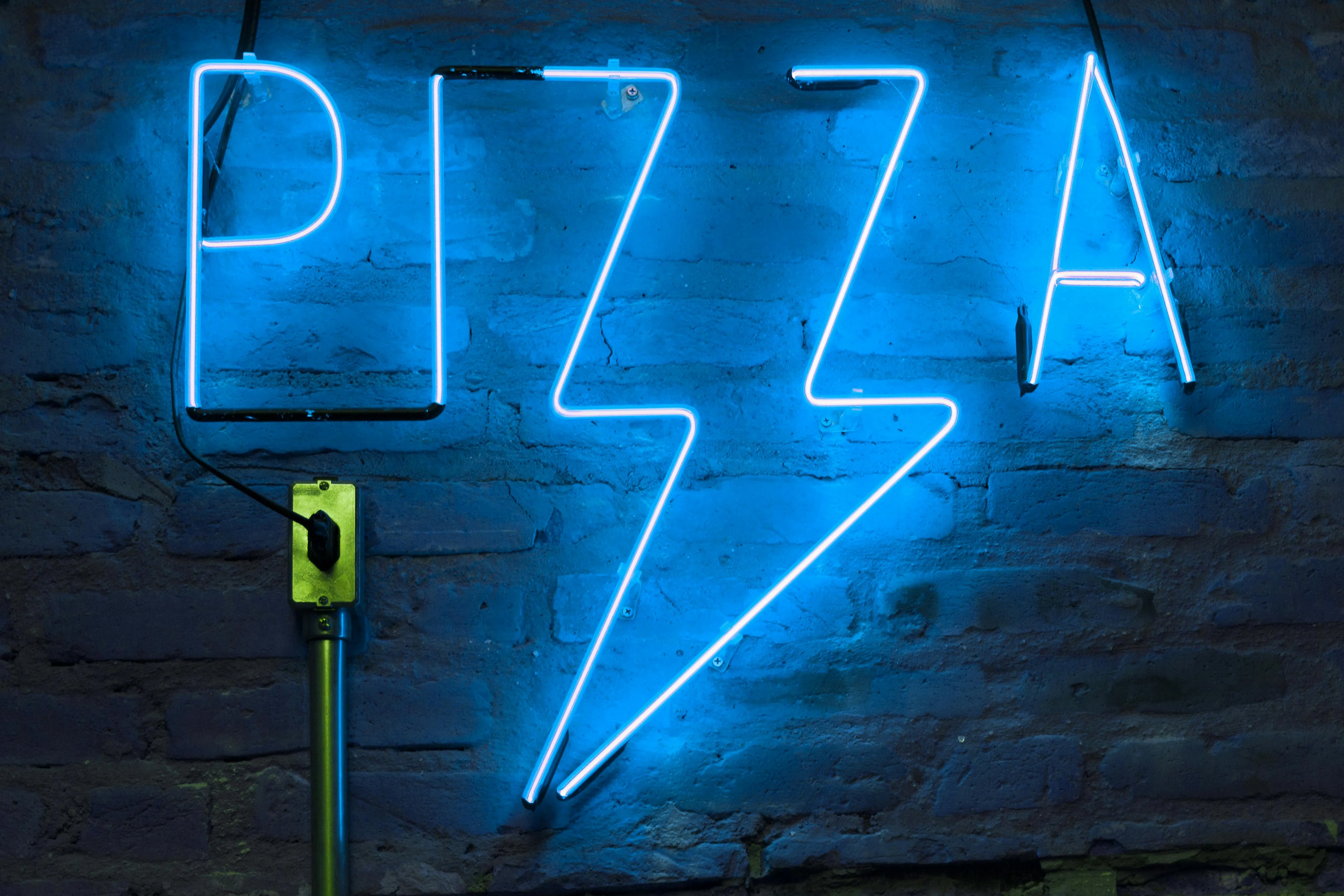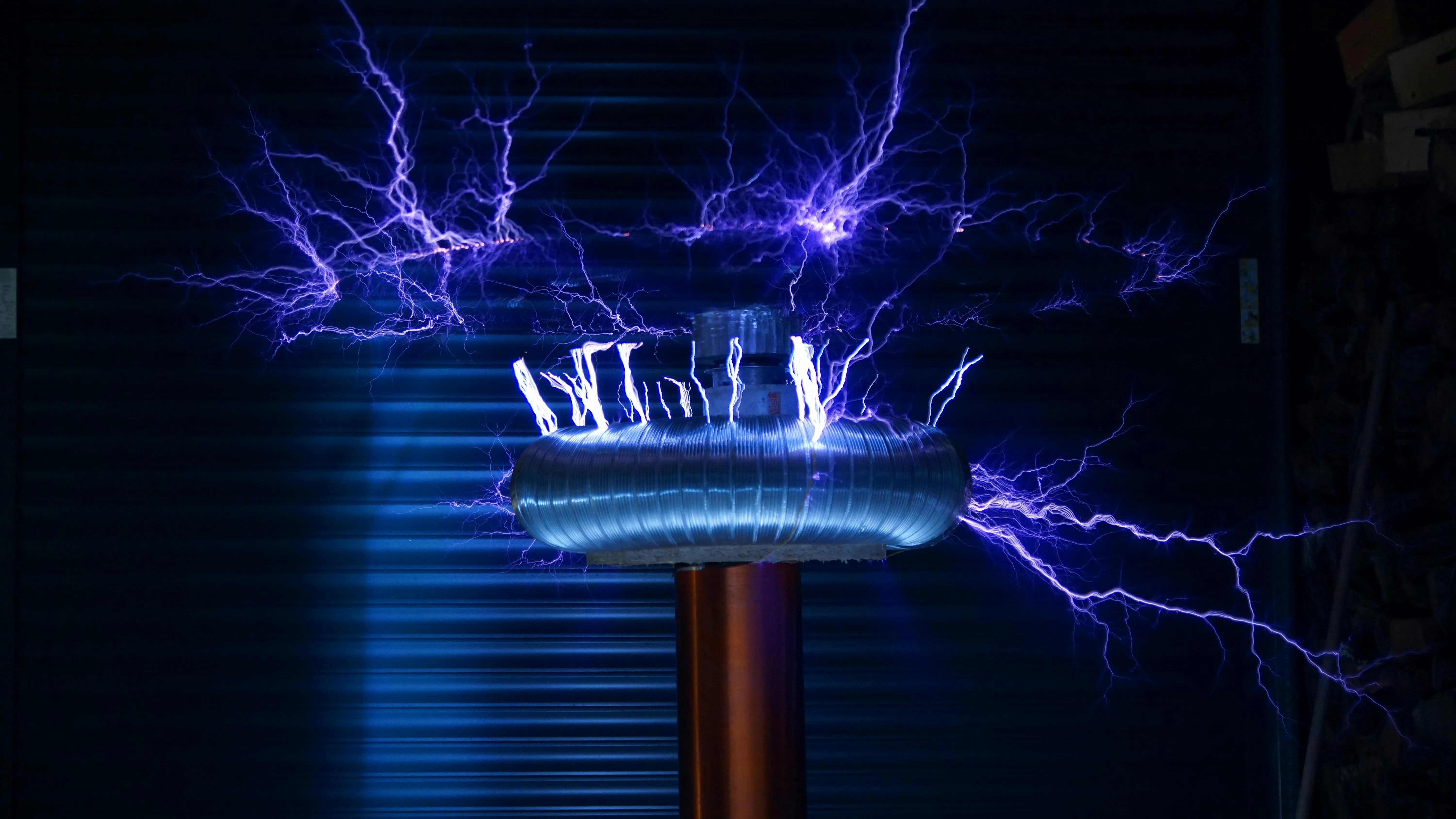What Voltage Does Neon Light Require? Minimum Volts And Usage Needs
Curious about what voltage neon lights require to operate? In this post, we dive into the specifics of the voltages required by neon lights to operate efficiently. From minimum voltage levels to specific usage considerations, discover all you need to know to get the optimal performance from your neon lights.

Key Takeaways
- The minimum voltage for neon lights is usually 1,000 to 2,000, but the typical voltage range is around 4,000 to 15,000 volts for balanced performance.
- Traditional neon signs use AC power for its ease in transforming high voltages. DC power can offer reduced flickering, but requires more complex, costly components.
- LED neon signs are far more energy efficient, requiring only 12-24 volts to operate whilst delivering a comparable aesthetic and performance to their glass counterparts.
- We supply high-quality custom LED neon signs that you can personalize to display anything you want with superb aesthetics and energy efficient performance.
Table of contents
-
What Voltage Does Neon Light Require?
-
How Many Volts Do Neon Lights Use?
-
Factors Affecting Neon Light Voltage
-
Voltage Requirements For LED Neon Signs
-
What Is The Voltage Of A Neon Light Transformer?
-
Determining Proper Loading For Neon Sign Transformers
-
Ways To Preserve Neon Light Voltage
-
Do Neon Signs Consume A Lot Of Electricity?
-
How Much Power Does A Neon Light Need?
-
Do Neon Signs Have To Comply With Certain Regulations?
What Voltage Does Neon Light Require?
The typical voltage required for neon lights ranges from 3,000 to 15,000 volts. This high voltage is needed to ionize the neon gas inside the glass tubes, which causes them to emit the iconic glow we all know and love. It is essential to deliver the correct voltage for both the longevity and optimal performance of neon lights, as:
- Too low voltage can cause dimming or flickering.
- Too high voltage can lead to damage to the neon tubes.
When you order custom LED signs from us, you get a solution that requires a far lower voltage - typically 12-24 volts. This means they are much more energy-efficient and safer whilst still providing a similar vibrant glow.

How Many Volts Do Neon Lights Use?
The typical voltage range for neon lights is between 3,000 and 15,000. This is the kind of high voltage it takes to ionize the gas inside the tubes for that characteristic neon glow. The color of the light has an impact on the voltage needed; for instance, blue or green lights may need different voltages due to the gasses or phosphor coatings involved.
Neon lights should be handled with caution when operating due to the high voltages used. If they are not properly handled or installed, it could lead to electrical hazards. Thus, safety protocols must be followed at all times, and you should consult professionals for installation and maintenance.
What Is The Minimum Voltage For A Neon Lamp?
The minimum voltage it takes to ionize the gas inside a neon lamp is around 1,000 to 2,000 volts. This is the threshold voltage - the minimum needed for the gas inside the neon tubes to become electrically conductive, thus emitting light.
There are several factors that influence this minimum voltage:
- Gas: Different noble gasses or gas mixtures require slightly different voltages to achieve ionization.
- Pressure: The pressure of the gas inside the glass tubes can affect the voltage needed. Higher pressure often requires a higher voltage for effective ionization.
Pay attention to the manufacturer instructions regarding voltage. The transformer within the device should deliver the optimal voltage once the unit is plugged in.
What Voltage Does Neon Need For Different Applications?
The application and size of a neon light can have an impact on its voltage requirements:
- Commercial signage. These are typically large and require high voltages around 4,000 to 15,000. The exact voltage depends on the length and diameter of the tubing, as well as the gas pressure. Transformers increase the standard line voltage to the required levels so that the neon gas can ionize effectively.
- Home decor: Smaller neon lights are often used for decoration in the home, and they typically require lower voltages. The normal range is between 2,000 and 7,500, so these lights use smaller transformers and may operate on standard household voltage levels through adapters. This ensures safety and energy efficiency with no sacrifice in the glow.
Choose low-voltage LED neon signs for personal or commercial applications
Our custom LED signs run on a very low voltage so you can keep them operating for long periods without fear or running up a high electricity bill.
Factors Affecting Neon Light Voltage
There are actually several factors that affect the voltage requirements of neon lights:
- Temperature: Lower temperatures mean the required voltage is higher, while higher temperatures often lead to a lower voltage requirement.
- Gas composition: Neon is the most common gas, but argon and krypton may also be used, and they require different voltages to ionize.
- Tube length and diameter: Longer tubes require higher voltages to achieve even illumination. The same is true of wider tubes, because they contain more gas and surface area.
Use your custom neon sign service to design your own LED neon lights that have far lower voltage requirements.
Voltage Requirements For LED Neon Signs
In a comparison of LED neon vs glass neon lights, the former operates at significantly lower voltages than the latter. This makes them more efficient and safer, as the low-voltage DC systems they use require just a tiny fraction of the amount of electricity to operate.
- LED neon: Requires around 12-24 volts to operate.
- Glass neon: Needs around 4,000 to 15,000 volts to ionize the gas.
With a lower voltage, there is a decreased risk of shock and fire hazards. More of the electricity used is converted into visible light, so there is lower energy consumption and cost. They are also durable and flexible, with fewer maintenance requirements.
What Voltage Is A Neon LED Strip?
Neon LED strips normally operate at a voltage of 12-24 volts DC, so they are energy-efficient and safe. They are popular for a variety of applications, in both residential and commercial settings. Common uses include:
- Accent lighting in homes
- Decorative outlines for signs
- Under-cabinet lighting
- Architectural lighting accents
With the low voltage requirement, there is a lower risk of electrical hazards, so they are great for DIY installation. Neon LED strips can be easily cut to size, and their flexible design allows for easy customization. They also offer benefits like low heat output, long lifespan, and vibrant color options. Thus, they are an environmentally-friendly alternative to traditional neon lights.
Looking for low cost neon signs?
If you are looking for custom neon signs under $100, you probably don’t want high running costs either. Our LED signs tick all the right boxes with low-voltage operation.
Learn moreWhat Is The Voltage Of A Neon Light Transformer?
Neon light transformers are a crucial aspect of how to wire neon signs, as they convert standard electrical line voltage into the high voltage required to ionize the gas in neon tubes. Typically, these transformers have an output of 4,000 to 15,000 volts, depending on the neon sign’s size and application.
The transformer is used to increase the household voltage - typically 120 or 240 volts - to a sufficient level to ionize the neon gas particles to create light. With the high-voltage output, the electrical current can flow through the inert gas and cause it to glow. Transformers are essential for stable operation and a consistent glow.
What Is The Voltage Of A Neon Switch?
Neon switches are often used as indicator lights in various applications, and they usually operate at a low voltage. They utilize a small neon bulb rated for a voltage range of 110 to 250 volts AC. The role of the neon switch is to indicate power status in devices by lighting up when the circuit is closed.
It is essential to use switches compatible with the voltage of the application. If you use a switch with an incorrect voltage rating, it could result in:
- Overheating
- Failure
- Electrical hazards
With a compatible switch, you are assured it can handle the electrical load for a safe and reliable operation.

Determining Proper Loading For Neon Sign Transformers
Determining the optimal loading for neon sign transformers is a crucial component of correct performance and lifespan for your neon signs. Proper loading involves calculating the overall footage of the neon tubing and matching it with the transformer’s voltage and current capacity.
Here’s how to calculate loading:
- Sum the lengths of all neon tubes.
- Multiply this by their specific current requirement (measured in milliamps).
- Compare this value with the transformer’s specifications.
If the load is excessive, the transformer will overheat, which could lead to reduced efficiency and even failure. Conversely, underloading might cause inconsistent lighting and a reduced lifespan. Select a transformer with a slightly higher capacity than the calculated load for reliability and maximum durability.
Capture the retro vibes without the outdated technology
Work with us to create custom retro neon signs and capture that vintage vibe without resorting to high-voltage neon technology. Our LED signs are extremely energy efficient.
Ways To Preserve Neon Light Voltage
Preserving neon light voltage is absolutely essential for maintaining longevity and performance. Regular maintenance involves things like:
- Cleaning the tubes
- Checking connections
- Tidying the surrounding space
These measures ensure efficient operation and prevent voltage drops.
Environmental factors like temperature and humidity can impact voltage. Extreme cold can mean it takes a higher voltage to illuminate the tubes, while high humidity can result in electrical leakage. Aim to install neon lights in stable environments with adequate ventilation to mitigate this.
Proper installation is fundamental - transformers should be correctly sized, which will affect how much your neon sign costs. Keep neon lights away from things like water exposure and rapid temperature changes to maintain consistent voltage.
Is Neon Lighting High Voltage?
Neon lighting is considered high-voltage as it requires a substantial voltage to ionize the neon gas. A voltage of 4,000 to 15,000 is considered high, but that's what it takes to excite the neon gas and cause it to emit light.
With these high voltage levels, safety precautions are crucial. Neon signs should be installed by professionals to ensure safety and minimize the risk of electric shocks and fire hazards. Regular maintenance checks should be carried out, looking for things like:
- Cracks in tubes
- Faulty connections
- Damaged transformers
Weatherproof housings and enclosures can protect against environmental factors, and you can opt for LED-powered custom neon flex signs for a simpler alternative.
Do Neon Signs Consume A Lot Of Electricity?
Neon signs use a lot of electricity in comparison to modern alternatives like LED neon lights. Consuming between 50 and 100 watts per hour for a standard-sized sign, glass neon is more energy-intensive than LED signs, which only use around 8-12 watts per hour for a comparable brightness.
LEDs convert a high percentage of electricity into light, so energy consumption and operational costs are lower. What’s more, LED signs have a longer lifespan and require less maintenance. They also have a lower heat output, so safety and efficiency are better.
We supply high-quality custom LED neon signs that are cost-effective and environmentally friendly, with no compromise on aesthetics or vibrant illumination.
DC Vs. AC High Voltage To Power Neon Gas Sign
Traditionally, neon signs are powered by AC voltage as it is easier to convert this to the higher voltages needed for ionizing neon gas. In comparing AC vs DC systems, the former is simpler for long-distance transmission and easy voltage adjustments.
DC voltage is not commonly used for neon signs, but it does offer some advantages. These include:
- Reduced flickering
- Consistent brightness
However, DC systems require more complex and costly components to convert from standard AC to high-voltage DC. Additionally, DC may not be so effective for powering longer neon tubes due to issues with voltage drop. DC might offer enhanced stability, but it often complicates the design of glass neon signs.
Enjoy low-voltage operation even with large neon signs
Our custom large neon signs are big in stature but small on electricity usage so you can enjoy energy efficient operation even with a large LED neon centerpiece.
Create yoursHow Much Power Does A Neon Light Need?
The power requirements for neon lights generally range from 30 to 100 watts per hour, depending on the sign’s size and complexity. Factors that influence power consumption include:
- Tube length and diameter: Longer, wider tubes consume more power.
- The brightness level desired: Higher brightness settings typically require more energy.
- The type of transformer: A more efficient transformer will consume less electricity during operation.
Proper maintenance and design optimization can help manage power consumption. This is key to improving the efficiency of neon signs.

Do Neon Signs Have To Comply With Certain Regulations?
Neon signs are required to comply with various regulations to ensure safety and functionality. Regulations address things like:
- Electrical standards
- Installation practices
- Signage visibility
For instance, electrical codes require effective insulation grounding, and transformer installation for safe operation. Local zoning laws may dictate rules around sign placement, size, and brightness to minimize light pollution.
It is crucial to comply with these regulations to prevent issues like electrical fires, ensuring safe operation and avoiding legal issues. Proper adherence will also help preserve the aesthetic and functional quality of the sign. All of this is simpler when you choose LED neon signs as they operate at lower voltages with superior safety and energy-efficiency.
Frequently Asked Questions About What Voltage Does Neon Light Require
What Is The Voltage Requirement For Neon Lights?
Traditional neon lights typically operate at voltages between 4,000 and 15,000 volts. Conversely, LED neon signs only need 12-24 volts to achieve a similar illumination.
About How Many Volts Do Neon Light Use?
The minimal voltage requirement is usually 1,000 to 2,000 volts, but the normal range is around 4,000 to 15,000 to get a stable, bright performance that catches the eye of onlookers.
